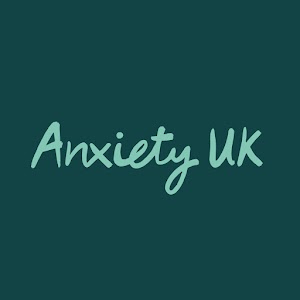Understanding the Symptoms of Anxiety
Understanding the Symptoms of Anxiety
Anxiety disorders represent the most common form of mental illness and account for 3·3% of the global burden of disease, costing approximately €74 billion across 30 European countries.1
In general, anxiety disorders are often underdiagnosed and undertreated. Of all people with anxiety disorders worldwide, less than 25% are estimated to receive any form of treatment, and even among those with an explicitly expressed need for care, less than 25% are estimated to receive potentially adequate treatment.2
To help reduce the burden of disease from anxiety disorders in individuals and worldwide requires timely, accurate disease detection and adequate treatment administration. 3
However, given that anxiety can manifest in many ways and be triggered by various worries or fears, the symptoms of anxiety are diverse and can vary greatly from person to person. It is important to therefore understand and recognise the symptoms of anxiety as early as possible to reduce the delay in accessing treatment.
Indeed, there are patients who have anxiety disorders that often present with symptoms that may not be obvious anxiety symptoms: for instance, patients who have panic disorder could present with symptoms akin to cardiac or respiratory problems.
Additionally, there are no blood, genetic, or imaging biomarkers that exist for anxiety, diagnosis relies on mental-state history and other symptom recognition.
The Onset and Impact of Anxiety
Anxiety symptoms often begin in childhood or adolescence and can persist into adulthood. These symptoms can affect your mind, body, and behaviour, showing up as physical symptoms, psychological distress, or behavioural changes. Here’s a closer look at the typical symptoms of anxiety:
Physical Symptoms:
- Heart: Increased heart rate, palpitations, or irregular heartbeat.
- Breathing: Rapid breathing (hyperventilation) or shortness of breath.
- Sweating: Excessive sweating, particularly on the palms and soles of the feet.
- Tremors: Shaking or trembling.
- Gastrointestinal: Nausea, abdominal distress, stomach aches, or feeling sick.
- Other: Headaches, muscle pain, dry mouth, pins and needles, or dizziness.
Psychological Symptoms:
- Emotions: Feeling irritable, tense, restless, weak, or tired.
- Thoughts: A sense of impending danger, panic, or doom, and excessive worrying about the past or future.
Behavioural Changes:
- Cognition: Trouble concentrating, making decisions, or avoiding things that trigger anxiety.
- Sleep: Difficulty sleeping or insomnia.
- Diet: Over or under eating
It’s crucial to understand that anxiety symptoms can vary, and you don’t need to experience all of these symptoms to be dealing with anxiety.
Seeking Help and Treatment Options
If you’re experiencing anxiety, remember that help is available. A great first step is to talk to your GP, who can guide you toward the appropriate treatment. Additionally, services like our TAUK to Us service offer personalised support and information for those living with anxiety. Book a call with one of our friendly advisors here.
One way to manage anxiety may be to consider talking therapy as a treatment option. To find the therapy best suited to your needs, you can use our TherapGuide® tool, available here. This tool helps you explore different therapy types and find one that aligns with your specific situation and preferences.
Above all else, remember that anxiety is a manageable condition, and with the right support, you can take steps toward feeling better.
Top of Form
Bottom of Form
References
1 Gustavsson A, Svensson M, Jacobi F, et al. Cost of disorders of the brain in Europe 2010. Eur Neuropsychopharmacol 2011; 21: 718–79.
2 Alonso J, Liu Z, Evans-Lacko S, et al. Treatment gap for anxiety disorders is global: results of the World Mental Health Surveys in 21 countries. Depress Anxiety 2018; 35: 195–208.
3 Seminar on Anxiety disorders Brenda W J H Penninx, Daniel S Pine, Emily A Holmes, Andreas Reif www.thelancet.com Vol 397 March 6, 2021 7-8






